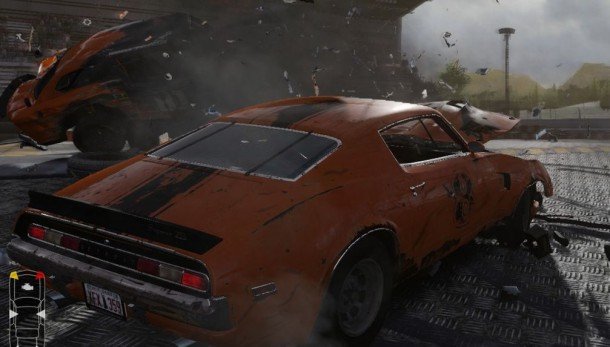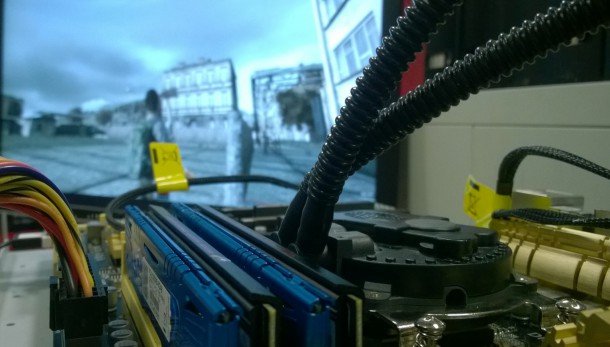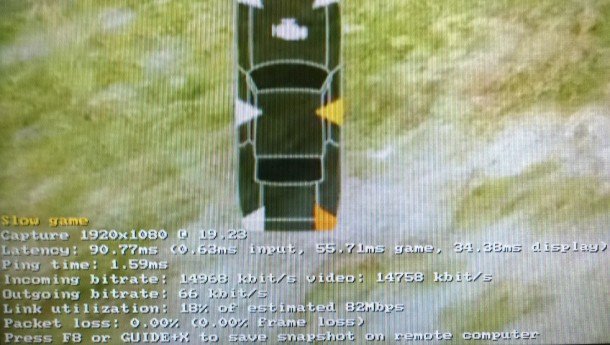Steam In-Home Streaming beta first impressions

This is what I've been waiting for. And actually also cements in my mind exactly what a waste of time those $499 and up third-party Steam Machines are for many PC gamers. The beta version of In-Home Streaming (IHS) is up and running on my Steam account and I've had a big grin all over my face since I started playing with it.
The idea is that you have a hefty, Windows-based desktop machine somewhere in your home with Steam installed on it. Then, using the same Steam account, you log on with a different machine and can then stream games from your base rig, over your local network, to whatever Steam-capable device you're running. That can be another Windows machine, a Linux-based rig or even an Apple Mac.
The base rig does all the heavy lifting so you just need a machine with the ability to a decent job decoding the signal to be able to access your entire Steam library on a machine that otherwise has no right whatsoever to be used as a gaming machine.
This is how Valve are able to give you access to every game in your account - not just Linux compatible ones - if you're playing around with SteamOS. Granted, you still need a Windows-based gaming machine, but it means you can build a tiny, cheap PC for your living room and drop Valve's free operating system on it, though it might be worth waiting until it's a little more user-friendly and less steadfast in its refusal to run on most PC hardware.
One of the things that has impressed me most about IHS is just how simple it's been to get up and running. I simply opted into the beta version of Steam on both remote and base machines and they saw each other over the local network immediately.

Sitting on a small Kaveri-based machine, without a discrete graphics card installed, I was quickly able to get Next Car Game streamed over the network, running at 1080p on the highest settings possible at around 23FPS with little lag and minimal graphical artefacting.
Given that on the highest settings it runs around 30FPS on my CrossFire'd HD 7970s that's not bad at all. The fact it was easy to control - well, as easy as those chunky muscle cars are to control - over the network was thoroughly impressive too.
The biggest gaming news, reviews and hardware deals
Keep up to date with the most important stories and the best deals, as picked by the PC Gamer team.
The lag was kept below 100ms, with only 0.6ms of that being about input. Handily the IHS beta has an intriguing little overlay which allows you to monitor things like latency and frame rate.
I was even able to beat a zombie to death with my bare hands in DayZ, streaming to the Kaveri rig with the game installed on a distant networked machine.

A stiffer test of IHS was trying to run GTA IV on my ropey Intel Celeron laptop. And run it did. The only problem was that the decoding capabilities of the notebook, I use almost exclusively for writing on the go, are simply not up to the task. That lead to dropped frames all over the place - like playing BF4 on a high-ping network. But still, I was stunned to be driving around Liberty City at all on this device at that level of graphical fidelity.
Luckily for my own peculiar desires though it was much happier streaming the more sedate confines of Football Manager 2014 over the network, which will put a stop to me having to keep a backup of my career save on a USB stick if I want to play sat on my sofa of an evening.
You even have a modicum of control over the base rig from the remote device too, the most important bit being that you can instruct it to download and install any game in your library. When you streaming to a device with limited storage space that's a must and means you can have an incredibly thin client for your lounge-based gaming rig.
This means my ideal Steam Machine is going to be very different from the sort of Steam Machines the third-party vendors are looking to throw out to the public in the second half of this year.

Dave has been gaming since the days of Zaxxon and Lady Bug on the Colecovision, and code books for the Commodore Vic 20 (Death Race 2000!). He built his first gaming PC at the tender age of 16, and finally finished bug-fixing the Cyrix-based system around a year later. When he dropped it out of the window. He first started writing for Official PlayStation Magazine and Xbox World many decades ago, then moved onto PC Format full-time, then PC Gamer, TechRadar, and T3 among others. Now he's back, writing about the nightmarish graphics card market, CPUs with more cores than sense, gaming laptops hotter than the sun, and SSDs more capacious than a Cybertruck.

